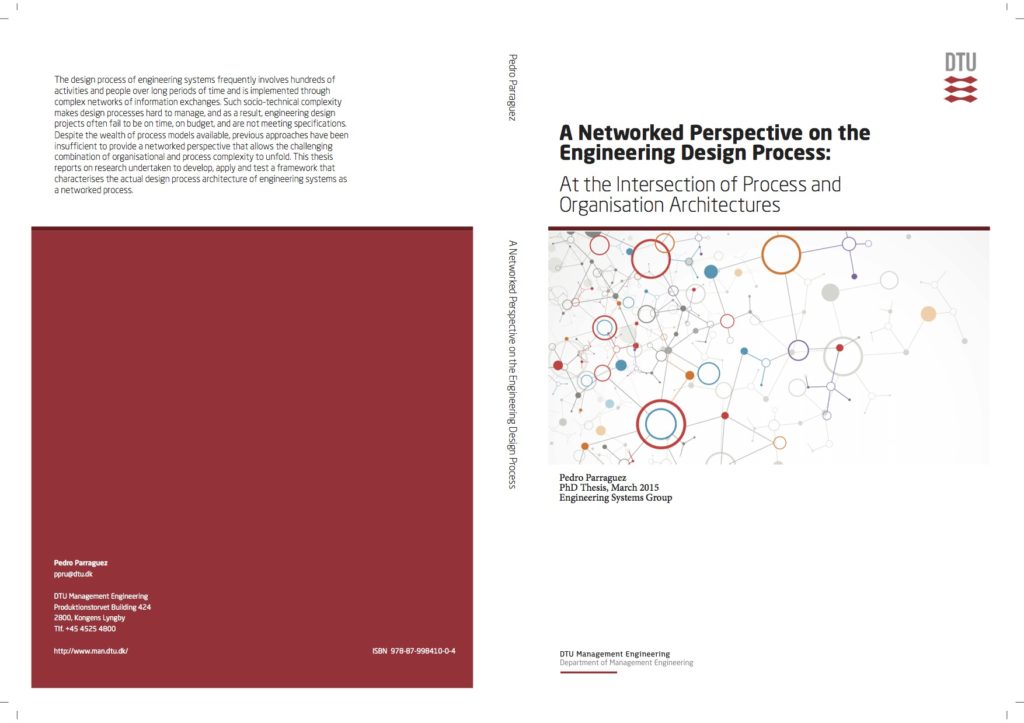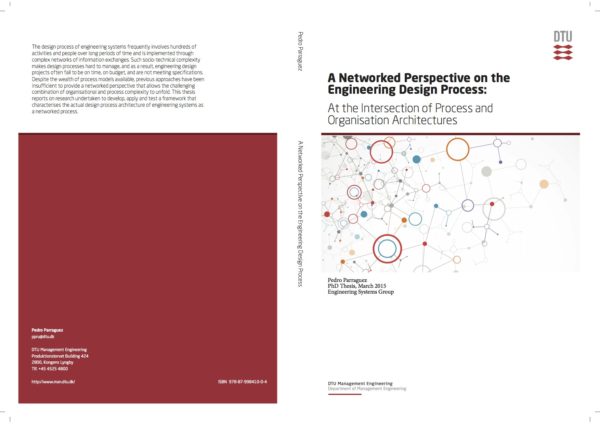PhD Thesis – A Networked Perspective on the Engineering Design Process: At the Intersection of Process and Organisation Architectures

Abstract:
The design process of engineering systems frequently involves hundreds of activities and people over long periods of time and is implemented through complex networks of information exchanges. Such socio-technical complexity makes design processes hard to manage, and as a result, engineering design projects often fail to be on time, on budget, and meeting specifications. Despite the wealth of process models available, previous approaches have been insufficient to provide a networked perspective that allows the challenging combination of organisational and process complexity to unfold. The lack of a networked perspective also has limited the study of the relationships between process complexity and process performance. This thesis argues that to understand and improve design processes, we must look beyond the planned process and unfold the network structure and composition that actually implement the process. This combination of process structure—how people and activities are connected—and composition—the functional diversity of the groups participating in the process—is referred to as the actual design process architecture.
This thesis reports on research undertaken to develop, apply and test a framework that characterises the actual design process architecture of engineering systems as a networked process. Research described in this thesis involved literature reviews in Engineering Design, Engineering Systems, Complexity and applied Network Science, and two case studies at engineering design companies with the objective of iteratively developing the framework and providing a proof-of- concept of its use in a large engineering design project.
The developed Networked Process (NPr) Framework is composed of a conceptual model of the actual design process architecture, and an analytical method that allows the model and data- driven support to be quantified. The framework provides a networked perspective on three fundamental levels of analysis: 1) the activity-level, characterised as a network of people performing each activity, 2) the interface-level, characterised as a network of people interfacing between two interdependent activities, and 3) the whole process-level, characterised as a dynamic network of people and activities. The aim of the framework is to improve the design process of engineering systems through a more detailed overview of the actual design process, to support data-driven reflection of the relationship between process architecture and performance, and to provide the means to compare process plans against the actual process. The framework is based on a multi-domain network approach to process architecture and draws on previous research using matrix-based and graph-based process models.
The results of the NPr Framework’s application in two case studies showed that decision makers in engineering design projects were able to gain new insights into their complex design processes through the framework. Such insights allowed them to better support and manage design activities, process interfaces and the whole design process. The framework also was used to enrich project debriefing and lessons-learned sessions, to spot process anomalies, to improve design process planning, to examine process progress, and to identify relationships between process architecture and performance. Contributions to knowledge include: First, the development of a more complete model of the actual process architecture and concrete analytical methods to quantify the developed model. Second, the identification of key structural and compositional variables as well as tests to identify the relationship between those variables and performance metrics. Third, the creation of a platform for further research on the relationships between actual design process architecture, behaviour and performance.

